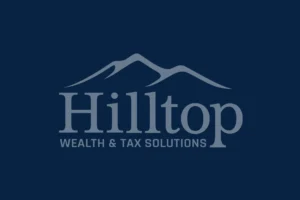MARKET UPDATE
The U.S. economy has demonstrated remarkable strength recently, highlighted by the final revision to second-quarter GDP growth, which was upgraded to a 3.8% annualized rate. This significant upward revision from the initial estimate of 3.0% was primarily driven by stronger-than-expected consumer spending, with personal consumption expenditures revised from 1.6% to 2.5%. This marked a sharp turnaround from Q1’s contraction and positions the economy for continued momentum, with the Atlanta Federal Reserve’s GDP tracker now forecasting third-quarter growth as high as 3.9% as of September 26. Despite persistent concerns about inflation running at 2.9% in August and the ongoing impact of tariffs, consumer resilience has remained the cornerstone of economic expansion, with retail sales increasing 0.6% in August and beating expectations.
The Federal Reserve delivered its first interest rate cut since December 2024, reducing the federal funds rate by 25 basis points to the 4.00%-4.25% range on September 17. Market participants had widely anticipated this move, as labor market conditions showed signs of cooling. However, the Fed characterized it as a “risk management cut” rather than the beginning of an aggressive easing cycle. The bond market has been supported by expectations of additional rate cuts, with investors pricing in approximately two more quarter-point reductions by year-end, though longer-term yields remain elevated due to concerns about persistent inflation and fiscal policy uncertainty.
As of 12:01 AM on October 1, 2025, the federal government has officially shut down after Congress failed to reach a funding agreement by the midnight deadline on September 30. Republicans proposed a stopgap measure through November 21, while Democrats pushed for healthcare provisions and limits on presidential funding authority. The standoff escalated after President Trump canceled meetings with Democratic leaders. Unlike past shutdowns, which largely involved furloughs, agencies have been instructed to prepare for potential layoffs. While brief shutdowns typically have limited economic effects, this one could delay key data releases, including Friday’s jobs report. The uncertainty has contributed to Treasury market volatility, though strong corporate earnings expectations for the third quarter, with estimated growth of 7.3% for the S&P 500, have helped support equity markets despite the political tensions.
ADVISORS’ PERSPECTIVE
As we enter the fourth quarter, markets are navigating a blend of relief and unease. The Federal Reserve’s September rate cut of 25 basis points marked a clear pivot toward easing after a long tightening cycle. Policymakers have acknowledged that growth is moderating while inflation progress remains uneven, leaving the door open for additional cuts before year-end. Futures markets are largely pricing in another reduction at the late-October meeting, reflecting broad confidence that the Fed will continue to guide the economy toward a soft landing.
Economic data still point to an economy cooling but not contracting. Unemployment has drifted slightly higher into the low 4% range, suggesting some labor-market softening without signaling widespread layoffs. The Treasury yield curve has re-steepened after years of inversion, a shift that often precedes slower growth as financial conditions catch up with prior rate hikes. That said, most forecasts continue to show modest positive growth through year-end, supported by stable consumer spending and a gradual easing in credit conditions.
The start of the new fiscal year brought a familiar political headwind: another government shutdown. This one has caused delays in some federal data releases and short-term disruptions to federal payrolls and contracts. Yet, markets have largely shrugged it off. Equity and bond prices have barely reacted, reflecting an investor base that has grown accustomed to Washington gridlock and expects a resolution before it inflicts lasting damage. The muted market response underscores a broader theme—investor numbness. After years of political standoffs, monetary policy swings, and global disruptions, traders have learned to tune out short-term noise unless it directly alters earnings, rates, or liquidity.
Trade policy, meanwhile, continues to complicate the broader picture. The global tariff measures introduced earlier this year, particularly the 10% reciprocal tariffs, have disrupted supply chains and created pricing imbalances across sectors. Domestic producers in certain industries are benefiting from protection, while import-heavy manufacturers and consumers face higher costs. These policy shifts are likely to sustain a mild inflation impulse, even as core price pressures ease elsewhere. The uneven impact of trade frictions has also widened performance gaps among sectors, keeping dispersion high in both equity and credit markets.
Despite the many moving parts, volatility remains strikingly low. The third quarter was one of the calmest in recent memory, as markets grew increasingly desensitized to headline risk. With investors largely expecting the Fed to manage a gradual easing cycle, the bar for what counts as “bad news” has risen. That complacency could become a risk of its own. When markets stop reacting to meaningful developments, whether political or economic, the eventual shock that breaks through often hits harder than expected.
Heading into the fourth quarter, the narrative is one of cautious optimism mixed with latent risk. The Fed’s path toward lower rates supports valuations, but the economy still faces crosscurrents from trade policy, political standoffs, and global demand. The government shutdown, while largely ignored for now, could begin to weigh on sentiment if it drags on. For investors, the prudent approach remains diversification across quality growth, selective cyclicals, and intermediate-duration fixed income. The surface calm may continue for a while, but the underlying currents remind us that complacency is not the same as stability.
This update is not intended to be relied upon as forecast, research, or investment advice, and is not a recommendation, offer, or solicitation to buy or sell any securities or to adopt any investment opinions expressed are as of the date noted and may change as subsequent conditions vary. The information and opinions contained in this letter are derived from proprietary and nonproprietary sources deemed by Hilltop Wealth & Tax Solutions to be reliable. The letter may contain “forward-looking” information that is not purely historical in nature. Such information may include, among other things, projections and forecasts. There is no guarantee that any forecast made will materialize. Additional information about Hilltop Wealth Solutions is available in its current disclosure documents, Form ADV, Form ADV Part 2A Brochure, and Client Relationship Summary Report, which are accessible online via the SEC’s Investment Adviser Public Disclosure (IAPD) database at www.adviserinfo.sec.gov, using SEC # 801-115255. Hilltop Wealth Solutions is neither an attorney nor an accountant, and no portion of this content should be interpreted as legal, accounting, or tax advice.




